Coronavirus: Why Denmark is taking steps to open up again
- Published

A supermarket in Funen has dividers and floor markings to separate shoppers
Denmark is about to make its first move to relax restrictions imposed to fight coronavirus.
From Wednesday, children aged 11 and younger return to schools and nurseries, after a month of closures.
It's among the first European countries aiming to put the lockdown into gradual reverse, just as it was one of the first to impose restrictions.
"It's important we don't keep Denmark closed for longer than we need to," said Prime Minister Mette Frederiksen, as she announced the move last week.
The spread of coronavirus appears to be under control and the government wants to get the economy going again.
But Denmark's moves will be slow and cautious. Ms Frederiksen likened them to walking a tightrope.
"If we open Denmark too quickly again, we risk infections rising too sharply and then we'll have to close down again," she said.

Deserted streets in Copenhagen
Denmark's borders will remain shut.
Who else is easing the lockdown?
Norway and Austria are also scaling back restrictions slowly.
In Austria some shops reopen this Tuesday, followed by other stores, restaurants and hotels in May.
Children go back to Norway's kindergartens on 20 April and junior schools a week later.
In Bulgaria farmers' markets are reopening. In the Czech Republic, shops selling building materials and bikes are back in business and rules have been relaxed for open-air recreation areas.
Spain, which along with Italy has been hardest hit by Covid-19, aims to allow non-essential workers back to work from Monday and will hand out protective masks at stations.
But for many countries the easing of restrictions still lies ahead. UK Foreign Secretary Dominic Raab has said it's too early to consider an exit strategy. And the head of the World Health Organization has warned against lifting stay-at-home measures too fast.
So why is Denmark ready to move?
Compared with other European countries, Denmark was an early mover. A raft of restrictions was announced on 11 March, 12 days before measures were introduced in the UK.
Gatherings have been limited to 10 people, the workforce told to stay home, and the borders shut.
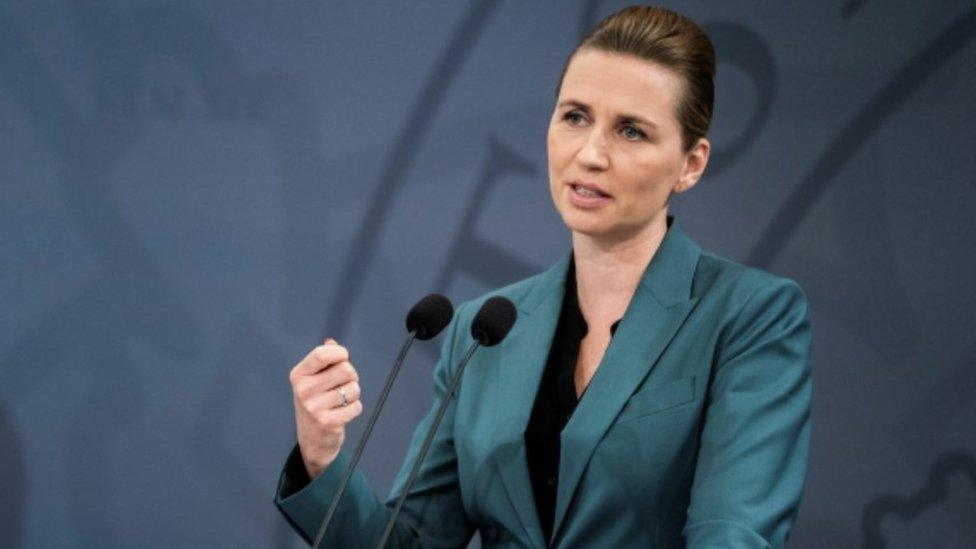
PM Mette Frederiksen: Easing restrictions will be very gradual
It's in stark contrast to neighbouring Sweden, which continued pretty much business as usual, and only recently curbed group sizes from 500 to 50 people.
However, Denmark's lockdown has been far less restrictive than those in France or the UK.
There is no stay-at-home order. Although bars, gyms and hairdressers are closed, many shops remain open.

A one-way sign directs joggers round a park to help keep them apart
Health data suggests Denmark's efforts are paying off.
"I think we are ready for a controlled reopening," says Hans Joern Kolmos, a professor in clinical microbiology at the University of Southern Denmark.
Has Denmark seen the back of the outbreak?
Some 6,000 cases and 260 coronavirus-related deaths have been recorded up to 11 April.
Crucially, total numbers of hospital admissions and patients in intensive care have fallen since the beginning of the month.
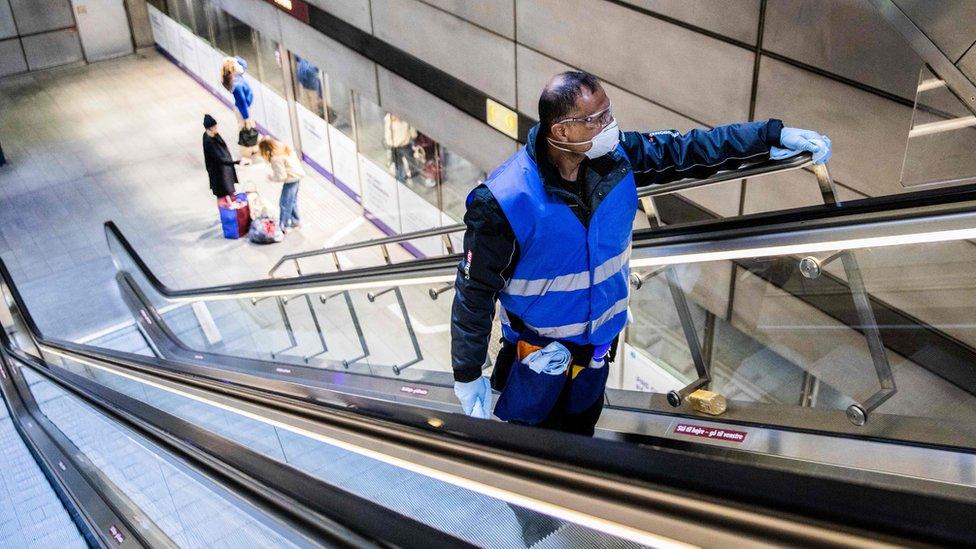
A cleaner in the strangely quiet Copenhagen metro
"We still have plenty of capacity, both in terms of ordinary beds, ICU [intensive care] beds and ventilators," says Prof Kolmos.
However, the country needs to be ready for potential "flare-ups" of the virus. "This means that we have to build up testing capacity," he adds.
What will change?
Opening up may prove trickier than closing down.
School guidelines are still being ironed out. There needs to be more distance between children, stricter cleaning regimes and more outdoor classes.
"This is not going to be a normal school day, from day one," says Dorte Lange, Vice President of the Danish Teachers' Union.
"Our members are filled with questions on how should we manage to do this in a safe way," says Ms Lange. "There are not two schools that are alike."

A SIMPLE GUIDE: How do I protect myself?
AVOIDING CONTACT: The rules on self-isolation and exercise
MAPS AND CHARTS: Visual guide to the outbreak
VIDEO: The 20-second hand wash

It is very likely that some schools will not be ready to open.
There has been a mixed reaction among parents. One Facebook group, called "My kid should not be a Guinea Pig for Covid-19", quickly racked up over 35,000 members.
However, Prof Kolmos says opening schools first makes sense. "Children seem not to be affected to any large extent, and this is the only way to get their parents back to work."
Students from Denmark, Spain, Japan and England on how they’re adapting to a new way of life
"I'm quite comfortable about sending them to school," says Anne Eskerod Borgstroem, a market research director and mother of three. "And I think also it's easier for me to do my job at home."
She feels the government's communications on the issue have been clear and that gives her confidence.
The handling of the crisis has seen widespread public support. According to one poll, 86% of Danes approve.
Why Denmark is not over this yet
The lockdown has taken a toll on livelihoods and most restrictions remain at least until 10 May, when the government considers its next steps.
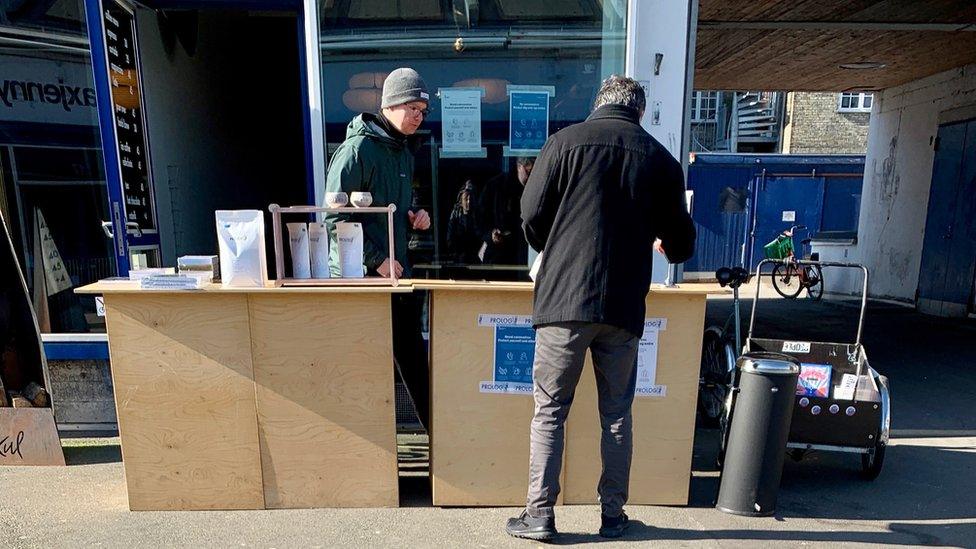
A coffee shop has moved to the pavement to continue business
It is still not clear when some businesses such as restaurants can reopen their doors.
"The restaurant industry is suffering as a whole. We've lost maybe 60% of our revenue," says Kasper Bundgaard Christensen, who runs two seafood restaurants in Copenhagen, called Hooked.
A ban on festivals and large events until September has also wiped out plans for their food truck. "Pretty much everything in our calendar was just cancelled. So it is a big knock."

Restaurant manager Kasper Christensen (L) has seen business evaporate
They are focusing on takeaway sales, and hope business gets back to normal by summer.
Twenty staff have been sent home but remain on the payroll, thanks largely to a compensation scheme designed to avert layoffs. "We pay 10% of their wage, and the government pays the rest."
"When this is over, we can look them in the eye and they can come to work for us again," says Mr Christensen.
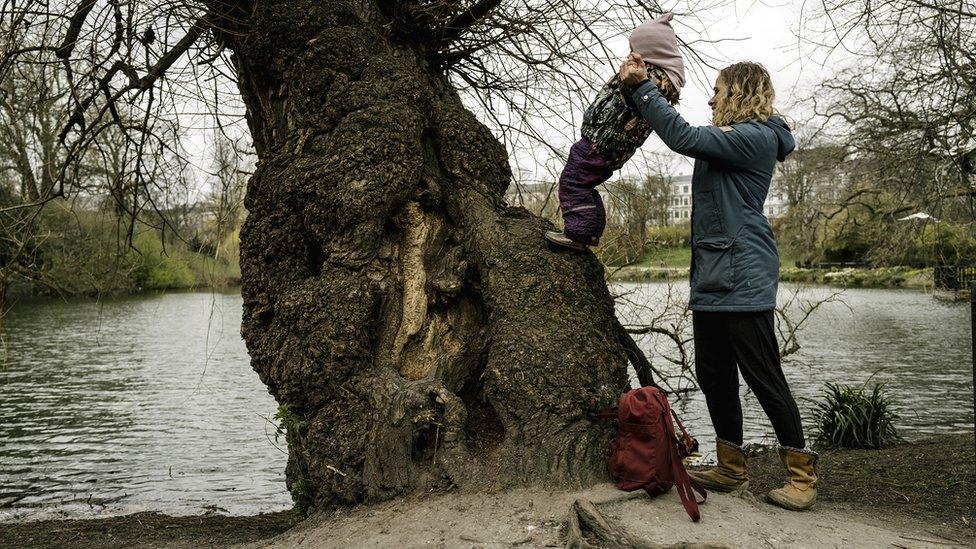
The school shutdown has tested Danish parents' resourcefulness
Hundreds of billions of Danish krone - equivalent to tens of billions of pounds or euros - have been spent on rescue packages.
Lars Sandahl Soerensen, Chief Executive of the Confederation of Danish Industry, says more is needed. "With the very gradual opening we are facing, many workplaces and businesses need assistance if they are to survive."
Opening up will clearly take time, and there will be lots of new rules.
"I don't think the normal life we had before coronavirus will come back," the prime minister told Danish public broadcaster DR.
- Published9 April 2020

- Published9 April 2020
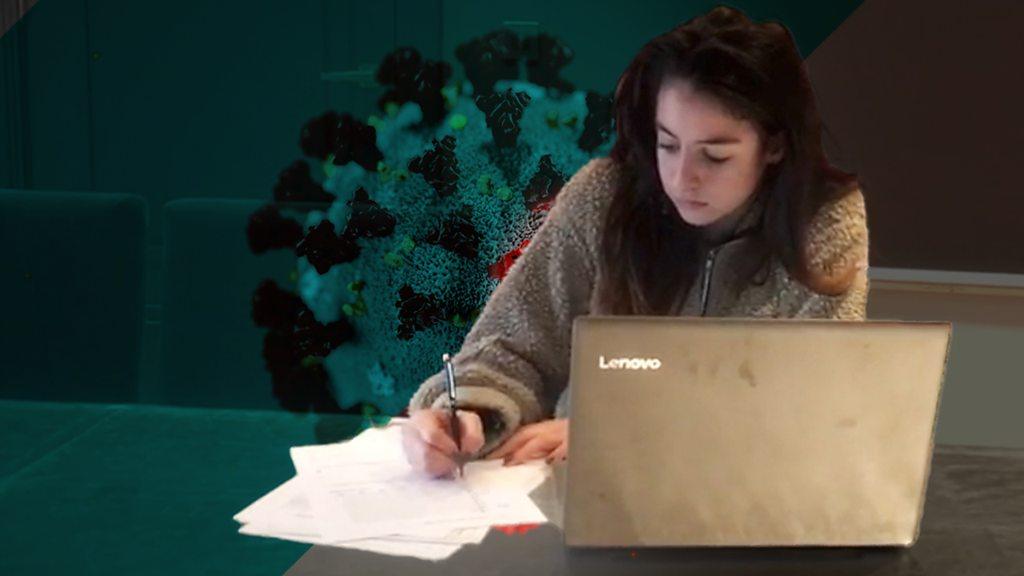
- Published31 March 2020
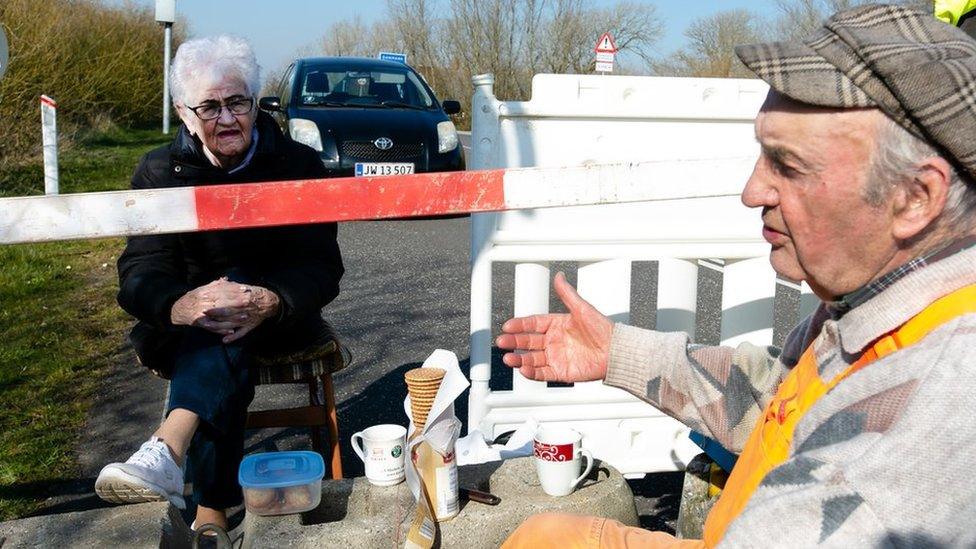
- Published29 March 2020
